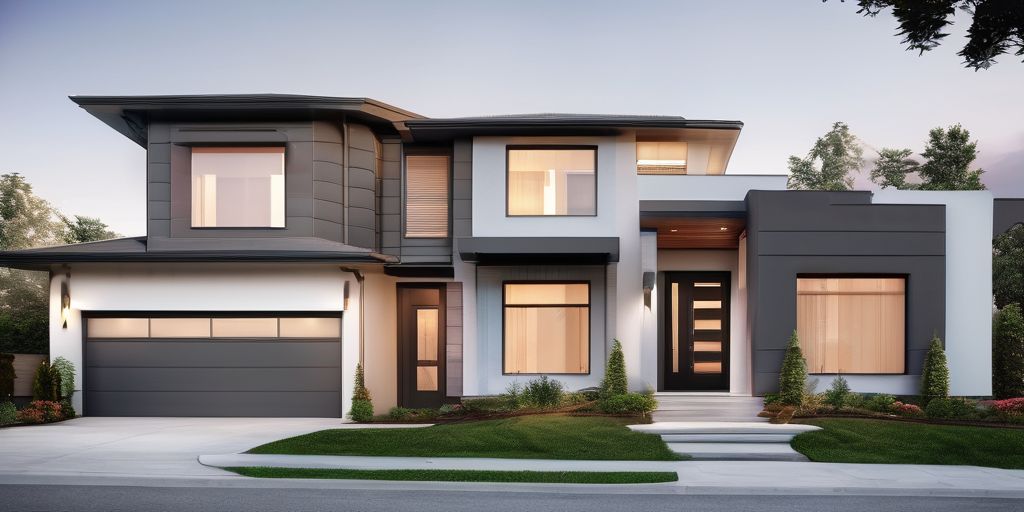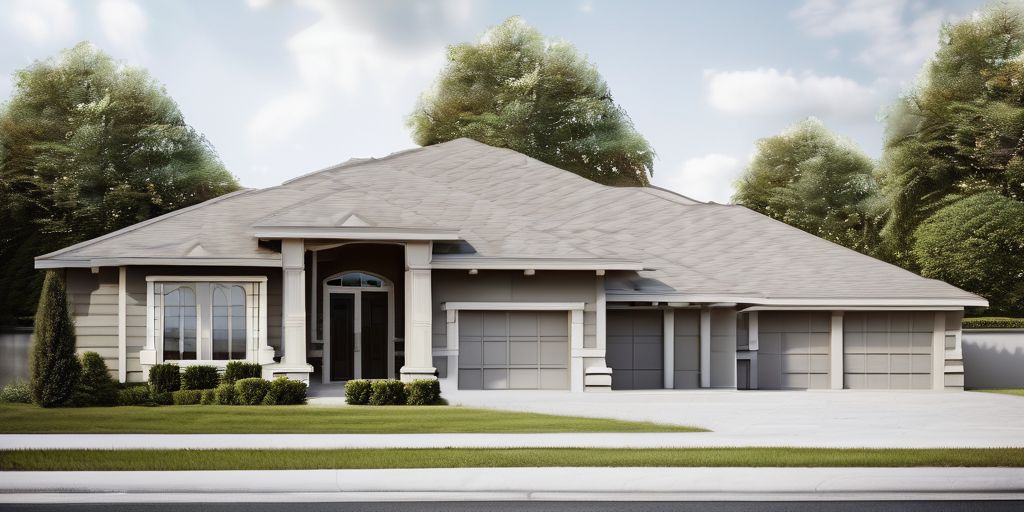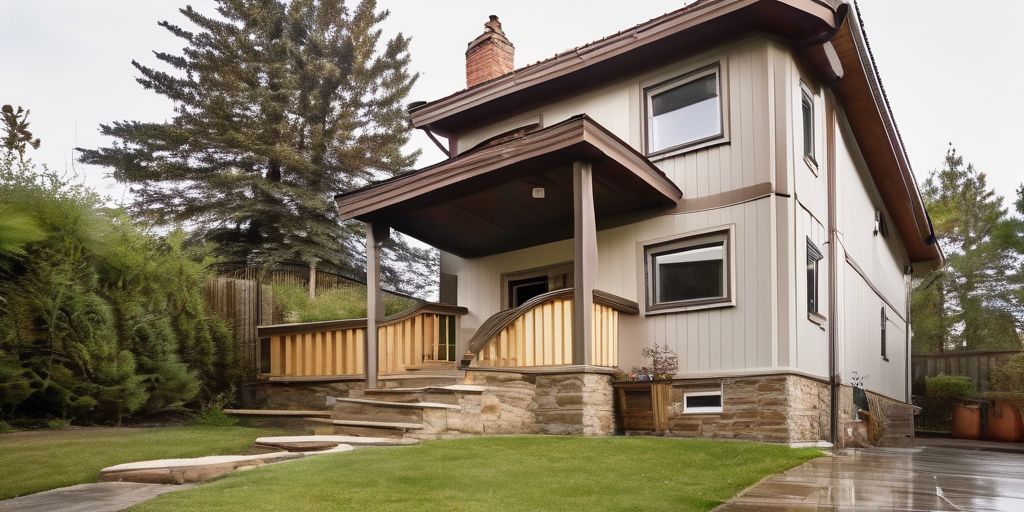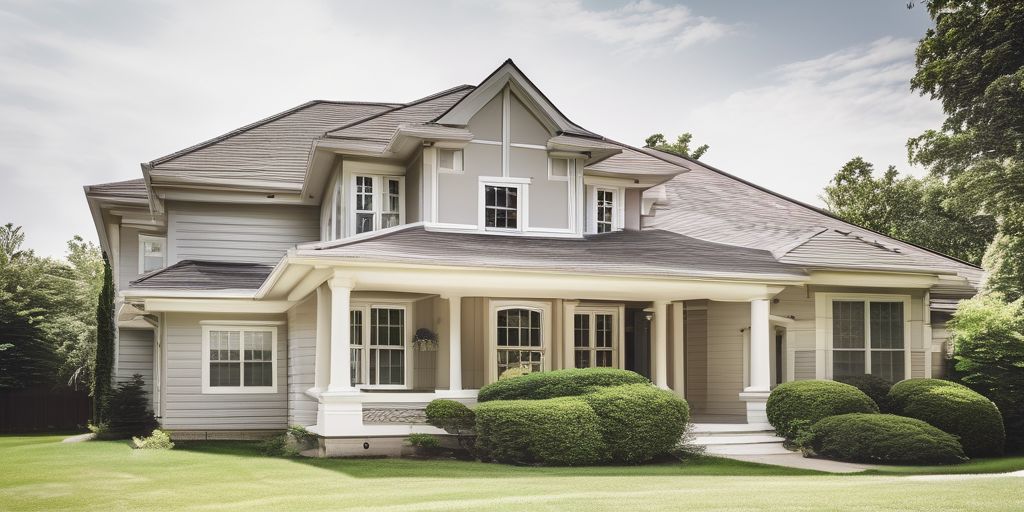When it comes to beautifying your brick home in Cambridge, choosing between painting and staining can be a tough decision. Both methods have their own set of benefits and drawbacks. This article will help you understand the basics, weigh the pros and cons, and guide you in making the best choice for your home.
Key Takeaways
- Brick painting and staining are two popular methods for enhancing the look of brick homes.
- Painting brick offers more color options but can hide the natural texture of the brick.
- Staining brick preserves the natural look but usually costs more and may need reapplication sooner.
- The choice between painting and staining depends on your aesthetic preference, maintenance willingness, and budget.
- Proper surface preparation and choosing the right products are crucial for both painting and staining to ensure long-lasting results.
Understanding the Basics of Brick Painting and Staining
What is Brick Painting?
Brick painting involves applying a layer of paint over the brick surface. This method is popular for those looking to change the color of their bricks or to give their home a fresh, updated look. Painted brick, especially in lighter colors, may require more frequent cleaning to keep its color lively and dirt-free. The process typically includes cleaning the brick, applying a primer, and then painting with a durable exterior paint.
What is Brick Staining?
Brick staining, on the other hand, penetrates the brick surface to add color while allowing the natural texture to show through. This method is often chosen for its ability to enhance the brick’s natural beauty without covering it up. Staining is less likely to peel or chip over time compared to painting. The process involves cleaning the brick, applying the stain, and sealing it for protection.
Key Differences Between Painting and Staining
- Appearance: Painting covers the brick completely, while staining allows the natural texture to show.
- Maintenance: Painted brick may need more upkeep, especially in harsh weather conditions.
- Durability: Staining tends to last longer and is less prone to peeling or chipping.
- Application: Painting requires a primer and multiple coats of paint, whereas staining involves a simpler application process.
When deciding between painting and staining, consider the long-term maintenance and the look you want to achieve. For example, if you live near the Charles River, the moisture levels might affect your choice.
Understanding these basics can help you make an informed decision about which method is best for your home.
Pros and Cons of Painting Brick
Advantages of Painting Brick
Painting brick exteriors is not just about changing the look; it offers several benefits:
- Enhanced Aesthetics: Painted brick can modernize the look of a home while keeping its classic texture and character.
- Easier Maintenance: A painted surface is simpler to clean and maintain compared to raw brick, which can gather dirt and dust.
- Protection: Paint acts as a sealant, protecting the brick from weathering and moisture.
- Cost-Effective: For bricks that are not in the best condition, painting can be a more affordable solution than replacing or repairing.
Disadvantages of Painting Brick
However, painting brick also has its downsides:
- Frequent Maintenance: Painted brick may require regular touch-ups to maintain its appearance.
- Trapped Moisture: If not done correctly, paint can trap moisture, leading to potential damage over time.
- Loss of Natural Look: Painting covers the natural beauty and texture of the brick.
- Permanent Change: Once painted, it is difficult to return to the original brick look.
Common Misconceptions
There are several misconceptions about painting brick:
- It’s a One-Time Job: Many believe painting brick is a one-time job, but it often requires ongoing maintenance.
- All Paints Are the Same: Using the wrong type of paint can lead to poor results and damage.
- Quick Fix: Some think painting is a quick fix for all brick issues, but proper preparation and application are crucial.
Painting brick is not just about aesthetics; it’s about protecting and preserving the material beneath. A well-executed paint job can enhance the durability of your brick, ensuring it stands the test of time.
Pros and Cons of Staining Brick
Advantages of Staining Brick
- Natural Appearance: Stains soak into the brick, keeping its natural texture and beauty while adding color. It often looks like the brick was always that color.
- No Peeling: Properly applied stain doesn’t peel; it just fades over time due to sun exposure.
- Moisture Permeability: Stains let the brick “breathe,” which helps prevent trapped moisture and potential brick damage.
Disadvantages of Staining Brick
- Greater Cost: Brick stain is more expensive than paint and requires more material and time to apply.
- Longevity Variance: Depending on the stain type and exposure, some stains may fade or need reapplication sooner than high-quality paint. The sun can fade the stain faster than paint.
Factors Affecting Longevity
- Type of Stain: Different stains have different lifespans. Some may last longer than others.
- Exposure Conditions: Sun, rain, and other weather conditions can affect how long the stain lasts.
- Application Quality: Proper application can extend the life of the stain, while poor application can shorten it.
Choosing the Right Method for Your Home
Assessing Your Home’s Exterior
When deciding between painting and staining, start by evaluating your home’s exterior. Consider the architectural style and the condition of the brickwork. If your home has historic value, [preserving Cambridge’s brick heritage through careful painting techniques involves weather considerations, historic home revival, masonry repair, and community involvement. Select breathable paints, harmonize colors, and prioritize eco-friendly options for lasting results.](https://wepaintsiding.com/exterior-painting/brick/cambridge-paint-brick/preserving-cambridges-brick-heritage-through-careful-painting-techniques/)
Considering Maintenance Needs
Maintenance is a key factor in your decision. Painted bricks often require more upkeep, such as touch-ups and repainting every few years. Stained bricks, on the other hand, tend to need less frequent maintenance. Think about how much time and effort you’re willing to invest in maintaining your home’s exterior.
Budget Considerations
Your budget will also play a significant role. Painting can be more affordable initially but may incur higher long-term costs due to maintenance. Staining might be more expensive upfront but could save you money over time. Weigh the initial costs against the potential long-term savings to make an informed choice.
Choosing the right method for your home involves balancing aesthetics, maintenance needs, and budget. Take your time to assess all factors to ensure a decision that enhances your home’s beauty and longevity.
Expert Tips for a Successful Brick Painting Project
Surface Preparation Techniques
Before you start painting, it’s crucial to prepare the brick surface properly. Begin by cleaning the brick thoroughly using a wire brush and soapy water to remove any dirt or efflorescence. For tougher stains, a solution of trisodium phosphate (TSP) and water can be effective—just remember to wear safety gear. Proper preparation and maintenance are key for durability.
Selecting the Right Paint
Choosing the right paint can make or break your project. Opt for a high-quality latex primer to ensure the paint adheres well to the brick. Once the primer is dry, use a durable exterior paint designed for masonry. This will help in achieving lasting quality in brick painting in Brantford.
Application Methods
When it comes to applying the paint, you have several options. You can use a paint roller for larger areas and a brush for detailed sections. Make sure to apply the paint evenly and allow each coat to dry completely before adding another. This will help you achieve a smooth, professional finish.
Attention to detail ensures lasting results and customer satisfaction.
By following these expert tips, you can ensure your brick painting project is a success, enhancing the look and longevity of your home’s exterior.
Expert Tips for a Successful Brick Staining Project
Surface Preparation for Staining
Before you start staining, make sure the brick surface is clean. Use a wire brush and soapy water to scrub off any dirt or grime. For tougher stains, a mix of trisodium phosphate (TSP) and water can be effective. Always wear safety gear when handling chemicals. Proper preparation ensures the stain adheres well and lasts longer.
Choosing the Right Stain
Selecting the right stain is crucial. There are water-based and oil-based stains, each with its own benefits. Water-based stains are easier to clean up and have less odor, while oil-based stains penetrate deeper and last longer. We’re sharing the five best tips for choosing the right wood stain for your project. Test a small area first to see how the stain looks on your brick.
Application Techniques
When applying the stain, work in small sections to ensure even coverage. Use a brush or a sprayer, depending on the size of the area. Apply in thin layers and let each layer dry before adding another. This helps in achieving a uniform look. For best results, practice your technique on a small, hidden area first.
Achieving a quality brick staining involves meticulous surface preparation, innovative techniques, and durable materials. Attention to detail ensures lasting results and customer satisfaction.
By following these tips, you can successfully stain your brick and enhance the look of your home. Whether you’re reviving Milton homes with brick paint or staining, the right approach makes all the difference.
Balancing Aesthetics and Practicality
Enhancing Curb Appeal
When deciding between painting and staining your brick, one of the main considerations is how it will affect your home’s curb appeal. Painted brick can match any decor style, from rustic to modern, making it a versatile choice. Staining, on the other hand, enhances the natural beauty of the brick, giving it a timeless look. Both methods can significantly boost your home’s visual appeal.
Minimizing Maintenance
A well-painted surface is easier to clean and resists staining, which means less upkeep over time. Staining also offers low maintenance, as it penetrates the brick and doesn’t peel or chip like paint can. This makes it a durable option for those looking to minimize future maintenance efforts.
When considering the enhancement of room aesthetics, it’s important to recognize that painted brick not only elevates the visual appeal but also serves as a practical measure to reduce future maintenance efforts.
Long-Term Implications
Choosing between painting and staining also involves thinking about the long-term implications. Painted brick may need to be repainted every few years to maintain its look, while stained brick can last much longer without needing touch-ups. However, both methods offer protection against environmental factors, prolonging the life of your brick.
In summary, balancing aesthetics and practicality involves considering how each method will impact your home’s appearance, maintenance needs, and long-term durability.
Finding the right balance between looks and usefulness for your home can be tricky. But it doesn’t have to be! At We Paint Siding, we specialize in making your home look great while also being practical. Our expert team offers top-notch exterior painting services that can transform your house without the high cost of replacements. Want to see how we can help? Visit our website to learn more and get a free estimate today!
Conclusion
Choosing between painting and staining your brick home in Cambridge comes down to what you want and how much work you’re willing to put in. Painting can give you lots of color choices and cover up flaws, but it needs good prep and upkeep. Staining, while often more beautiful, costs more and might not last as long. Think about what fits your style and how much time you can spend on maintenance. Both methods have their own perks and downsides, so pick the one that works best for you and your home.
Frequently Asked Questions
What is the main difference between painting and staining brick?
Painting brick covers the surface with a layer of paint, while staining brick penetrates the brick to change its color without covering the texture.
Which lasts longer, brick paint or brick stain?
High-quality brick paint generally lasts longer than brick stain, which may fade more quickly due to sun exposure.
Is brick staining more expensive than brick painting?
Yes, brick staining is usually more expensive and time-consuming compared to brick painting.
Can I change the color of my brick after it has been painted or stained?
Yes, you can repaint or re-stain brick, but it may require additional preparation and effort to achieve the desired result.
Does painting brick require a lot of maintenance?
Painted brick does require some maintenance, such as occasional cleaning and touch-ups, but it is generally manageable.
Are there more color options available for brick paint or brick stain?
Brick paint offers more color options compared to brick stain, which is usually more limited in color choices.





